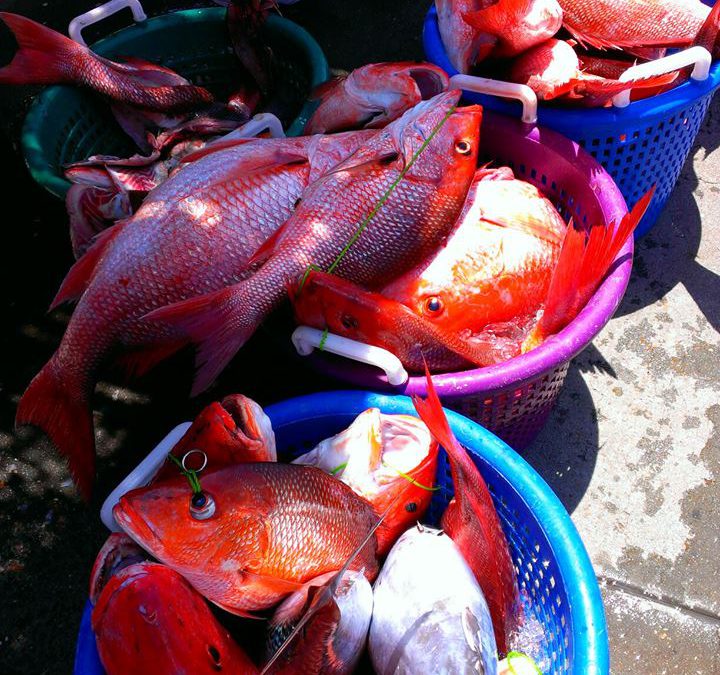
by Rick O'Connor | Mar 20, 2019
I recently had the fortunate opportunity to observe a commercial longline vessel being unloaded at a landing near Perdido Key. 10,000 pounds of fish, mostly grouper and tilefish, were being unloaded for markets in Atlanta, Canada, and locally. When I heard 10,000 pounds two things popped into my head right way…
1) That is a lot of fish
2) It is great to know that fresh local seafood can still be had.
It is a lot of fish, and this concerns some about the future of wild caught seafood. Humans have been harvesting wild caught seafood since the beginning of time, or at least as far back as boats go. What has changed today is better technology and more fishermen on the water. With these issues in mind, you have to either (a) reduce the number of fishermen on the sea, or (b) reduce the number of fish harvested. Though not always popular, this is where fisheries management comes in.
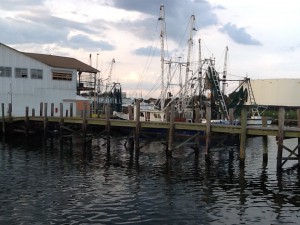
Commercial seafood is a large part of Florida’s economy and culture.
Photo: Rick O’Connor
The basic idea is to allow each species a chance to breed at least once before they are harvested. The Magnuson-Stevens Act, passed in 1996, requires that commercial fisheries within U.S. territorial waters be sustainable – meaning viable into perpetuity. To do this you need to know the life cycles of your target species. At what age do they become sexually mature and begin breeding? The age of a fish can be determined by rings in the otolith (ear bone) and there is a correlation between the number of rings and the length of the fish; hence the length regulations many species have. You need to know at what age they reach maturity, you allow one (sometimes more) years beyond this age allowing them to breed.
The next metric is how many of the mature adults can you allow to be harvested and remain sustainable. This obviously takes a lot of fisheries biology, and there are researchers at the federal, state, and university levels who work on these questions. When you know the answer to some of the biology questions, you can now input this into a computer model and determine what is known as the maximum sustainable yield, or how many fish (or the number of pounds) can be removed and still be sustainable.
Computer models are only as good as the programs that are developed for them. These can be hard to test. Hurricane computer models have become pretty good. Everyone remembers when Michael was approaching the Pensacola area and the modelers were sure it would make an eastward turn; and it eventually did. The thing about hurricane models is that if they are not working well, you know relatively quickly. Hurricane approaches shore – computer predicts where it will go – it makes landfall somewhere else – you correct the model – we get better. With fisheries, and other issues, we do not always get feedback as quickly as this. Stock assessments for selected species have to be made to see how the models are working, and this takes time.
Though it may not be an exact science, fisheries management certainly has helped hold on to some species that would have been harvested out otherwise.
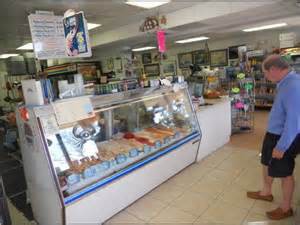
There are about 80 species of commercial seafood products that come from Florida.
Photo: Florida Sea Grant
As far as knowing local seafood is still available, this is good news for many. Checking in with your local seafood markets you can find a variety of species at different times of the year. Some provide information as to which local restaurants they sell to. Many locals, and visitors, are willing to pay a higher price for these sought-after seafood species. It is good to know you can still get them in our area.

by Rick O'Connor | Mar 6, 2019
The vast majority of you reading this are aware of the lionfish, but for those who are not, this is a non-native invasive fish that has caused great concern within the economic and environmental communities. Lionfish were first reported in the waters off southeast Florida in the late 1980s. They dispersed north along the east coast of the state, over to Bermuda, throughout the Caribbean, and were first reported here in the northern Gulf of Mexico in 2010. It has been reported as the greatest invasion of an invasive species ever. In 2014, it was also reported that the highest densities of lionfish within the south Atlantic region were right here in the northern Gulf.
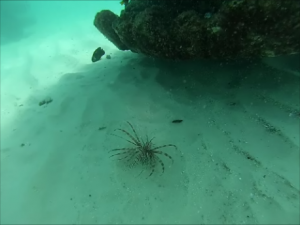
Lionfish at Pensacola Beach Snorkel Reef. Photo Credit: Robert Turpin
The creature is a voracious predator, consuming at least 70 species of small reef fish. For what ever reason, they prefer artificial reefs over natural ones and studies show that red snapper are further away, and higher above, artificial reefs that lionfish inhabit. All of this points to an economic and environmental problem with native fisheries in area waters.
So, what has been going on with lionfish in recent years?
What is the new science?
In 2018 Florida Fish and Wildlife Conservation Commission held its second statewide lionfish summit, and in 2019 Sea Grant held a panhandle regional lionfish workshop to get answers to these questions. There were sessions on recent research, impacts of the commercial harvest, and current regulations on harvesting the animals.
From the researchers we heard that the densities in the northern Gulf of Mexico have decreased over the last five years, at least in the shallow waters less than 120 feet. This is most probably due to the heavy harvest efforts from locals and from tournaments. They found that lionfish still prefer artificial over natural reefs but that their overall body condition on artificial reefs is poorer than those found on natural bottom. They have found evidence of some consumption of juvenile red snapper, but juvenile vermillion snapper have become a favorite. Another interesting discovery, they are feeding on other lionfish. Consumed lionfish are not as common as other species, but it is happening. They are also finding lionfish with ulcers on the skin. They are not sure of the cause, or whether this is impacting their population, but they will continue to study.
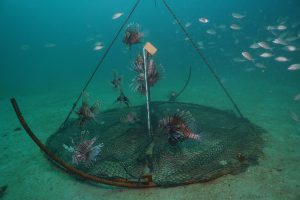
Deep water lionfish traps being tested by the University of Florida offshore Destin, FL. [ALEX FOGG/CONTRIBUTED PHOTO]
Can traps be found easily?
Will tethered buoys impact migrating species in the area?
Will the traps move between time of deployment and recovery?
How much by-catch will they harvest?
These are all concerns but there was some good news. Several different designs have been tried but one in particular, being studied by NOAA and the University of Florida, has had some success. The trap unfolds as hits the bottom, stays in the same location (even during recent storms), and only has about 10% by-catch – 90% of what it catches is lionfish. These traps are un-baited as well, using structure to attract them. However, these were not tethered to buoys (so there are questions there) and there is a larger issue… federal regulations.
Currently trapping for finfish in federal waters (9 miles out) is illegal in the Gulf of Mexico. Another issue is based on the Magnuson Act, all commercial harvest in federal waters needs to be sustainable. You cannot overharvest your target species, which is exactly what we want to do with lionfish. So, these regulatory hurdles will have to be dealt with before deep-water commercial harvest with traps could begin.
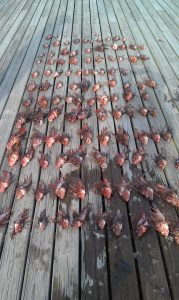
Harvested lionfish. Photo Credit: Bryan Clark
The current method of commercial harvest is with spearfishing SCUBA divers. The sale of salt water products license to do so soared between 2014 and 2016, but since there has been a declined. At the recent workshop the commercial harvesters and restaurants were there to discuss this problem.
First, the divers feel they need to be paid more in order to cover the cost of their harvest. This has become even harder in lieu of the decline in shallow, safe diving depth, waters. However, the restaurants feel the price needs to drop in order for them to offer the dish at a reasonable price to their customers. Most of the commercially harvested fish are currently going to markets outside the area where the current price is acceptable. The workshop suggested that this trend will probably continue and fewer harvesters will stay in the business. That said, the dive charters indicated they are making money taking charters out to specifically shoot lionfish for private consumption. This venture will probably increase.
So, after 10 years of lionfish in local waters, it appears that we have made a dent in their shallow water populations but must keep the pressure on. Several researchers indicated that frequent removals do make an impact, but infrequent does little – so the pressure needs to stay on. Deep water populations… we will have to see where the trap story goes.
If you have further questions on the current state of lionfish in our area, contact me at the Escambia County Extension Office. (850) 475-5230 ext. 111.
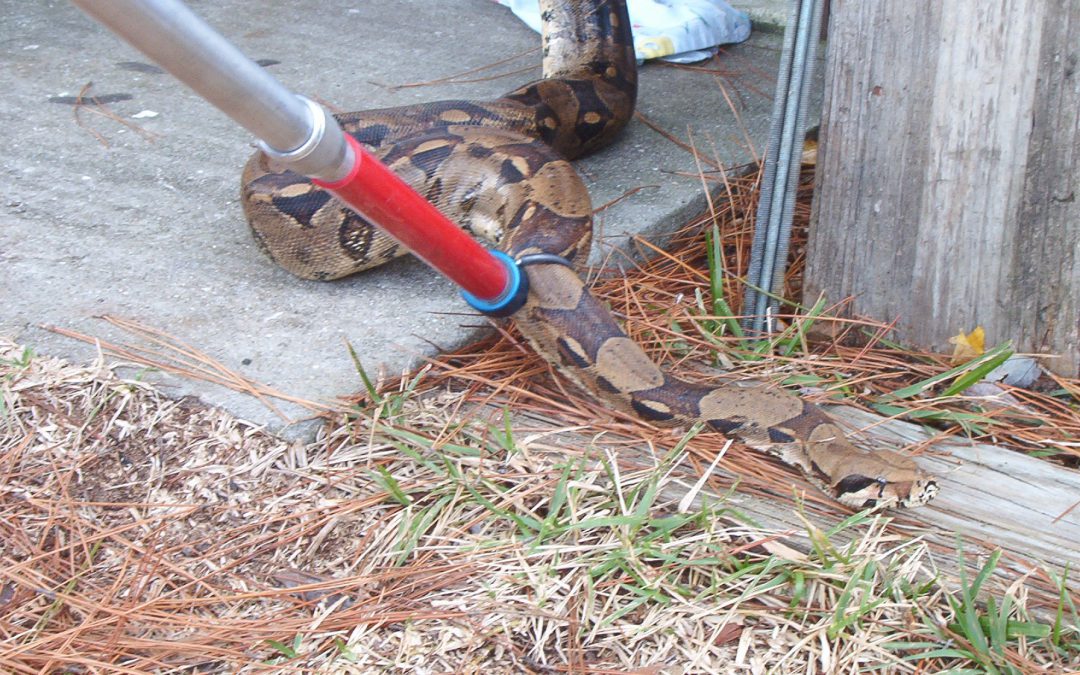
by Rick O'Connor | Mar 5, 2019
I am a pro and con guy.
When our family has a big decision to make, they usually ask me to list pros and cons before we make such a decision, it is something I have done since I can remember. It is not that different from the seven-year rule. When faced with a big decision, some native American cultures discuss how this decision will impact their families and the community seven years down the road.
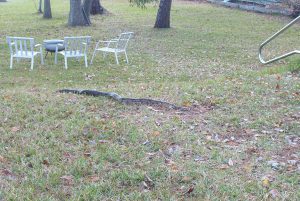
A large boa constrictor escaped in a neighborhood in Pensacola.
Photo Courtesy of Escambia County Animal Control
When I first saw the new Florida Fish and Wildlife Conservation Commission’s prohibited exotic species list, I thought of this pro-con / seven-year rule idea. For example, the Meerkat is on the list. A meerkat. Is this a good pet to start off with? Are they easy to maintain? To feed? Are they pets (as in… can you PET them)?
As I thought through my pro/con-seven-year idea, I thought not – but others obviously do. There are a lot of strange exotic pets in the United States and around the world. A species of turtle that I monitor is a pet trade target. The largest markets are China and the United States. I am guessing status is one reason why people chose pro over con. Maybe they do not think of the cons before making this decision, or maybe the pros are more important to them, so they are willing to overcome the cons – I am not sure.
Either way, FWC’s decision to prohibit this new list of species is not because they might make bad pets, rather it is their high risk of becoming invasive. Florida knows all too well how many of these exotic pets become problems in our local ecosystems. Lionfish, pythons, tegus to name a few. By definition, invasive species cause either environmental or economic problems for the communities where they become established – sometimes both. In 2014, the United States spent over 180 million dollars battling invasive species. We just completed our first statewide Weed Wrangle Event where volunteers went into the community and removed as many invasive plants as they could on a single day. The statewide numbers are not out yet, but locally the Six Rivers CISMA spent the morning removing Chinese Privet, Camphor trees, and Japanese Climbing Fern from a popular biking trail in a state park. And we all know, we will have to do it again.
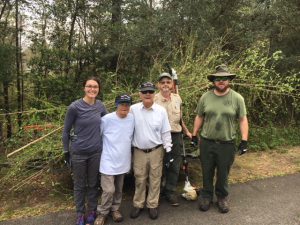
A group of volunteers from the Florida Park Service and Americorp helped to remove invasive plants during a recent Weed Wrangle event.
Photo: Rick O’Connor
Some say that spending time and money trying to control these invasive is a waste. Others know that not doing so could lead to a serious environmental or economic problem – so the weeds must be pulled, and the animals captured. All scientists and resource managers who deal with invasive species understand their best chance of eradicating them is when they FIRST appear on the scene – Early Detection, Rapid Response (EDRR). This is also the most cost-effective point in the invasion to work on them. However, most citizens do not know about certain invasive species until they are common in the landscape, and many times it is now too late for eradication – time to go into control mode.
One local species we hope we have begun working on soon enough to eradicate is Beach Vitex (Vitex rotundifolia). This plant is not that common statewide and is a potential target for eradication. Many along our barrier islands know of the plant now and, hopefully, will manage it on their property before it becomes widespread and problematic.
It was in this light that the FWC decided to approve a rule that would prohibit selected exotic animals as pets in Florida. These were considered high risk for becoming invasive if they were to escape or were released. This includes:
Mammals: Meerkats, Mongoose, Raccoon dogs, Dholes, Bushtail possums, and Flying foxes
Birds: Diochs, Red-whiskered Bul-Bul, Java sparrow, and Pink starling
Reptiles: Brown tree snake, Yellow anaconda, Beni anaconda, and Deschauensee’s anaconda
It is the hope that through this rule it will be harder to obtain these animals as pets and possible release into Florida’s landscapes. It is also a hope that people will reconsider having such creatures as pets in the first place. The pro-con / seven-year plan should be considered before buying any pet, particularly exotic ones.
To learn more about local invasive species and what you can do to help manage them on your property, you can visit the FWC page https://myfwc.com/wildlifehabitats/nonnatives/, or contact your county extension office.
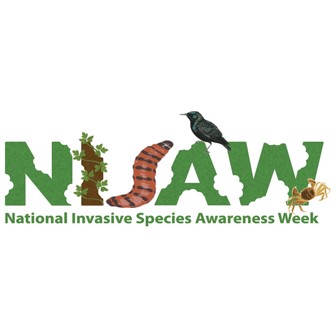
by Rick O'Connor | Feb 16, 2019
The last week of February is National Invasive Species Awareness Week (NISAW). Each year we post several articles about invasive species that are established in the panhandle, and those that are potential threats.
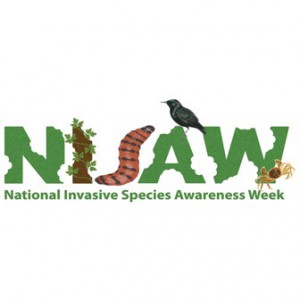
As most of you know, invasive species can be quite problematic. By definition, they are non-native creatures that arrived in Florida via human transportation. Whether intentional or non-intentional, their arrival has caused either an environmental problem, an economic one, or both. Research shows that the most effective method (both with eradication and cost) is detect and treat them early – what we call EDRR species (Early Detection Rapid Response). However, many of these invasives that “hover” just outside of our area do not make our radar until they have become established. It is at this time we begin to recognize their harmful impacts and demand action to battle them. In many cases, it is too late, and you find yourself in a management mode trying to keep the current population under control.
Though south Florida is ground zero for many invasive species problems, the panhandle is not without its issues. The articles will begin posting Feb 25 and run the rest of the week. For those in the Santa Rosa and Escambia County, we will end the week with an invasive species workday – the Weed Wrangle. For this years’ Weed Wrangle, we will be assisting the Florida state park service by removing the invasive Chinese Privet from the Blackwater Heritage Trail in Milton. The Weed Wrangle will be Mar 2 from 9:00 AM until 1:00 PM. We will meet at the Heritage Trail Visitors Center for a brief orientation and then begin to remove privet. The address is 5533 Alabama Street in Milton FL. You can park next to the library or the playground. Please wear closed toed shoes, bring gloves, loppers, and a water bottle.
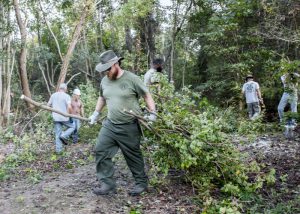
Members of the Six Rivers CISMA remove Chinese tallow from a city park in Pensacola.
Photo: Kristal Walsh.
Remember if you ever have questions concerning local invasive species, you can contact your county extension office for more information.
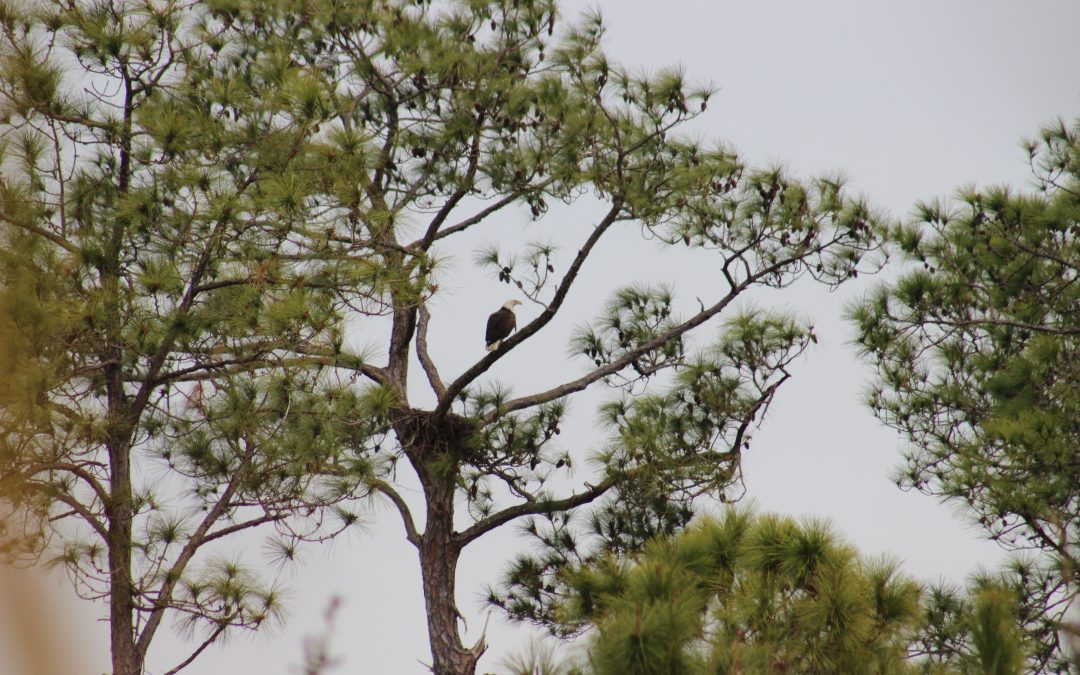
by Rick O'Connor | Feb 10, 2019
On a recent trip to Santa Rosa Island, my wife saw two bald eagles flying down the shore of Santa Rosa Sound. Wanting photos of the nest, we searched and found two individuals in a small nest (for an eagle) in a tall pine. One individual was an adult, the other a juvenile.
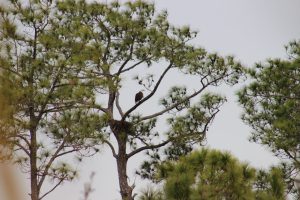
Bald eagle nest on Santa Rosa Island.
Photo: Molly O’Connor
Seeing bald eagles is like seeing bottlenose dolphins. I do not care how many times you have seen them over the course of your life, it is always exciting. Growing up here, I do not remember these animals in our area. Of course, their numbers suffered greatly during the DDT period, and poaching was (and still can be) a problem. But both the banning of DDT and the listing on the Endangered Species List did wonders for this majestic bird. They now estimate over 250,000 breeding populations in North America and 88% of those within the United States. Florida has some of the highest densities of nests in the lower 48 states. Though the bird is no longer listed as an endangered species, it is still protected by the Florida Eagle Rule, the federal Migratory Bird Treaty, and the federal Bald and Golden Eagle Protection Act.
It was shortly after Hurricane Ivan that someone told me they had seen a bald eagle in the area. My first reaction was “yea… right… bald eagle”. Then one afternoon on my back porch, my wife and I glanced up to see two flying over. Now we see them every year. The 2016 state report had 12 nesting pairs in the Pensacola Bay area. They were in the Perdido Bay area, Escambia Bay area, Holly-Navarre area, and Pensacola Beach area. Many locals now see these birds flying over our coastlines searching for food and nesting materials on a regular basis.
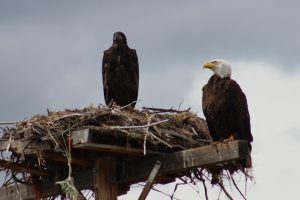
An adult and juvenile bald eagle on nest in Montana.
Photo: Molly O’Connor
Bald eagles are raptors with a thing for fish. However, they are opportunistic hunters feeding on amphibians, reptiles, crabs, small mammals, and other birds. They are also notorious “raiders” stealing fish from osprey, other raptors, and even mammals. They are also known scavengers feeding on carrion and visiting dumps looking for scraps. Benjamin Franklin was in favor of the turkey for our national emblem because the bald eagle was of such low moral character – referring their stealing and scavenging habit.
The Cornell Lab of Ornithology list the bald eagle as a year-round resident along the Gulf coast, but most of us see them in the cooler months. Their nesting period is from October through May. They select tall trees near water and build their nest just below the crown of the canopy. One local ecotourism operator has noticed their preference for live trees over the dead ones selected by osprey. Eagle nest are huge. A typical one will be 5-6 feet in diameter and 2-4 feet tall. The record was a nest found in St. Pete FL that was 10 feet in diameter and over 20 feet tall! The inside of the nest is lined with lichen, small sticks, and down feathers. One to three eggs are typically laid each season, and these take about 35 days to hatch. Both parents participate in nest building and raising of the young.
Viewing bald eagles is amazing, but approaching nests with eggs, or hatchlings, can be stressful for the parents. Hikers and motorized vehicles should stay 330 feet from the nests when viewing. Bring a distance lens for photos and be mindful of your presence.
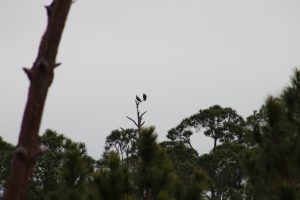
An adult and juvenile bald eagle are perched in a dead tree near their nest.
Photo: Molly O’Connor
No matter how times you see these birds, it is still amazing. Enjoy them.
References
Florida Fish and Wildlife Conservation Commission. Bald Eagle Management. 2018. https://myfwc.com/wildlifehabitats/wildlife/bald-eagle/.
Jimbo Meador, personal communication. 2017.
Williams, K. 2017. All About Birds, the Bald Eagle. Cornell University Lab of Ornithology. https://www.allaboutbirds.org/guide/Bald_Eagle/overview.

















